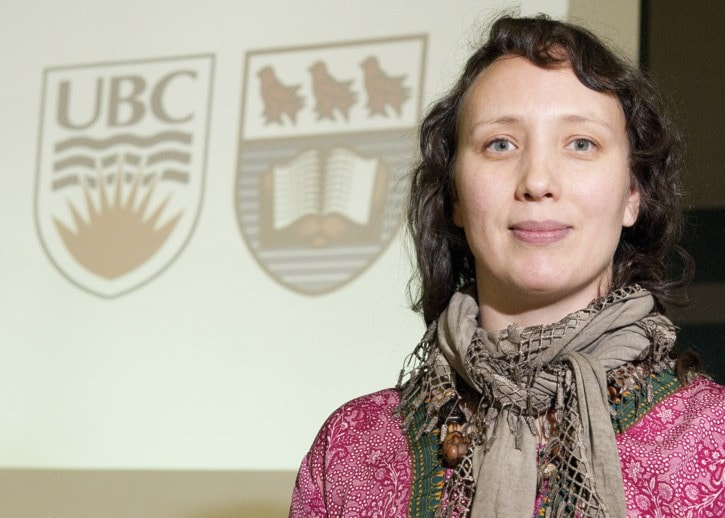Developing a sustainability plan prior to mining development is of key importance to producing longer term benefits to mining resource-based communites.
This is according to a new study completed recently by a group from the University of British Columbia (UBC) comprised of researchers from the School of Population and Public Health as well as the Norman B. Keevil Institute of Mining Engineering.
One of the researchers on the study examining mining and community health spoke to community members recently.
Dr. Janis Shandro came to Kwah Hall to meet with community leaders, health care workers, social service providers and community members, as well as Terrane Metals/Thompson Creek.
There were about 30 people present, some from Northern Health, Nakazdli band council, Fireweed Society and community members but a noted absence from the district mayor and council.
The group listened to Shandro explain the study and its findings and then worked on ideas for developing a sustainability plan for Fort St. James and the surrounding communities.
“At the end of the mine, we don’t want to be 10 steps back,” said Lisa Sam, from Nak’azdli.
Collaboration is the key, according to Shandro.
“People from all sides have to be willing to come together in a productive way,” she said.
Shandro emphasized the importance of direct involvement of the community and its leaders.
“The mining company cannot come up with your community vision,” she explained.
Christy Smith, spokeswoman for Terrane Metals, fielded some questions and said Thompson Creek and Terrane have had a more regional sustainability committee already in place, from 2007, and will now probably be looking at using some of Shandro’s knowledge to improve on what they are doing, as the study’s findings are so new.
“No matter what, Thompson Creek supports the community,” said Smith. “What that support looks like, we don’t know yet.”
Lisa Sam drew attention to the lack of district council in attendance and said she hopes there is something in place to ensure any promises made to the community by the mine are carried through.
“We really need to have some way of monitoring what they say they are going to be doing and see that it gets done,” she said.
But it isn’t about pointing fingers or looking at the negatives, according to Brandi Hanterman, executive director at Fireweed.
She said the idea is simply to be proactive and work with the mine and the community to prepare to deal with the upcoming changes.
“We just want to make sure this community goes through this process as healthy as possible.”
Hanterman said the group at the meeting is now working to gather the baseline information on where the community is at with its health and social welfare so the agencies can use this as a baseline to track changes and use the information to lobby for additional support and funding as demands increase and change.
They are also working to identify who needs to be a part of the process, with the goal of preventing another boom and bust experience like the one the Fort went through during the downturn of the logging industry or the one experienced in the mining community of Tumbler Ridge.
Dr. Shandro, one of the authors presented her findings from the study that compared rural resource-based communites, examining their economic, social and health characteristics. The study focused on mining-based communities, and used other resource-based communities as controls to compare the differences, with the goal to “advance the sustainaibility of rural communities.”
It examined 15 mining communities and as many non-mining resource-based communities between 1991 and 2002. Social and economic characteristics were examined using census data, and health information was used to examine overall health impacts, and local service providers were consulted.
There were four key findings highlighted in the summary of the report, showing both positive and negative impacts of mining in communities.
Mining was found to positively contribute to communities, with higher community incomes and lower male unemployment as well as more married and educated residents than in other communities.
However, there were also increased vulnerabilities in mining towns to economic downturns due to less diverse economic opportunities in mining-based communities.
There were also unequal opportunities for women in all of the rural resource based study communities, but this inequality was greater in mining communities. There was a large difference between average annual incomes of men and women, and higher unemployment rates among women.
In terms of health findings, while during good times for the industry, mining and other resource-based communities were not very different in rates of acute cardiovascular disease (CVD), during downturns, there was a 30 per cent increase in CVD in mining communities and only a three per cent increase in comparison communities.
Mining communities also showed higher rates of mental disorders during downturns in steady employment, with a 21 per cent increase for these periods.
The study then recommends six different strategies to enhance sustainability and health in mining communities.
The first is to continue to commit to sustainable development, and this commitment needs to come from all parties.
The second recommendation is to develop a community sustainability plan, created by local leaders/policy makers, health care providers and industry working together.
Third, the researchers recommend strengthening community capacity economically, socially and in terms of health.
Addressing inequities for women is also a key component of long-term sustainability and it is important to facilitate new opportunities for women living in these communities.
The final recommendations are to engage health care providers during mine development planning in order to strategize strengthening community health and for researchers to work on sharing the findings of their research.
Only one of the 15 mining communities in the study showed long-term prosperity after mine closure, and it was also the community which had done community sustainability planning.
The Fort St. James district and council was presented with a summary of Shandro’s study and invited to attend future meetings, which council pledged to do.
